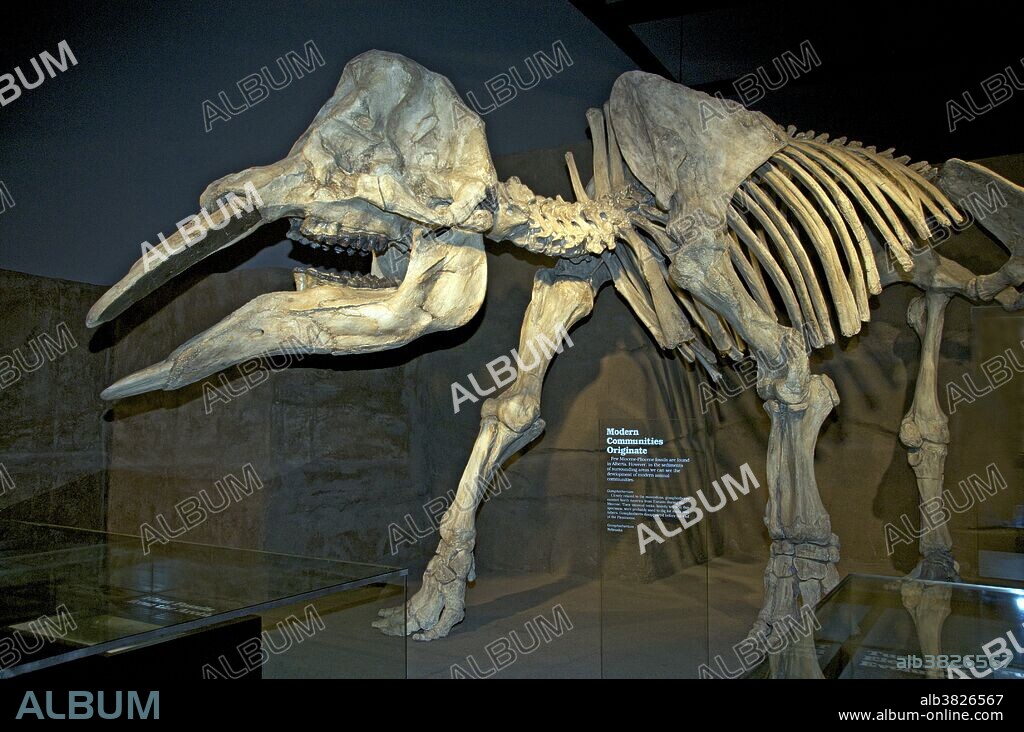alb3826567
GOMPHOTHERIUM

|
Añadir a otro lightbox |
|
Añadir a otro lightbox |



¿Ya tienes cuenta? Iniciar sesión
¿No tienes cuenta? Regístrate
Compra esta imagen

Título:
GOMPHOTHERIUM
Descripción:
Ver traducción automática
Gomphotherium, closely related to mastodons, disappeared before the end of the Pleistocene. The 3 m (10 ft) tall creature, also known as Trilophodon or Tetrabelodon, resembled a modern elephant but had four tusks instead of two: two on the upper jaw and two on the elongated lower jaw. The lower ones are parallel and shaped like a shovel and were probably used as such. Unlike modern elephants, the upper tusks were covered by a layer of enamel. These animals probably lived in swamps or near lakes, using their tusks to dig or scrape up aquatic vegetation. This specimen was found in Nebraska. Royal Tyrrell Museum, Alberta, Canada.
Crédito:
Album / Science Source / Stephen J. Krasemann
Autorizaciones:
Modelo: No - Propiedad: No
¿Preguntas relacionadas con los derechos?
¿Preguntas relacionadas con los derechos?
Tamaño imagen:
4304 x 2852 px | 35.1 MB
Tamaño impresión:
36.4 x 24.1 cm | 14.3 x 9.5 in (300 dpi)
Palabras clave:
 Pinterest
Pinterest Twitter
Twitter Facebook
Facebook Copiar enlace
Copiar enlace Email
Email
